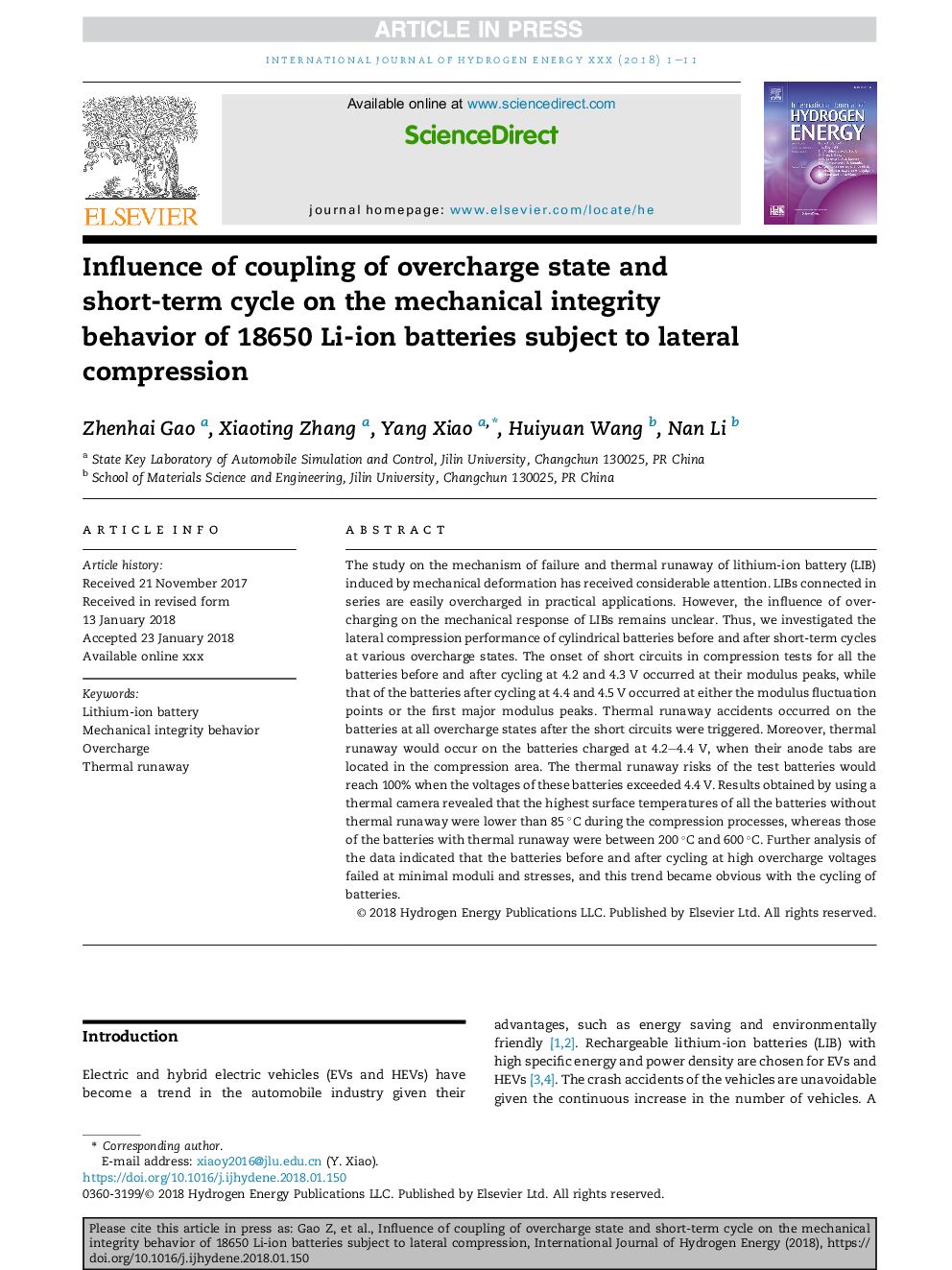| Article ID | Journal | Published Year | Pages | File Type |
|---|---|---|---|---|
| 7707386 | International Journal of Hydrogen Energy | 2018 | 11 Pages |
Abstract
The study on the mechanism of failure and thermal runaway of lithium-ion battery (LIB) induced by mechanical deformation has received considerable attention. LIBs connected in series are easily overcharged in practical applications. However, the influence of overcharging on the mechanical response of LIBs remains unclear. Thus, we investigated the lateral compression performance of cylindrical batteries before and after short-term cycles at various overcharge states. The onset of short circuits in compression tests for all the batteries before and after cycling at 4.2 and 4.3 V occurred at their modulus peaks, while that of the batteries after cycling at 4.4 and 4.5 V occurred at either the modulus fluctuation points or the first major modulus peaks. Thermal runaway accidents occurred on the batteries at all overcharge states after the short circuits were triggered. Moreover, thermal runaway would occur on the batteries charged at 4.2-4.4 V, when their anode tabs are located in the compression area. The thermal runaway risks of the test batteries would reach 100% when the voltages of these batteries exceeded 4.4 V. Results obtained by using a thermal camera revealed that the highest surface temperatures of all the batteries without thermal runaway were lower than 85 °C during the compression processes, whereas those of the batteries with thermal runaway were between 200 °C and 600 °C. Further analysis of the data indicated that the batteries before and after cycling at high overcharge voltages failed at minimal moduli and stresses, and this trend became obvious with the cycling of batteries.
Related Topics
Physical Sciences and Engineering
Chemistry
Electrochemistry
Authors
Zhenhai Gao, Xiaoting Zhang, Yang Xiao, Huiyuan Wang, Nan Li,
